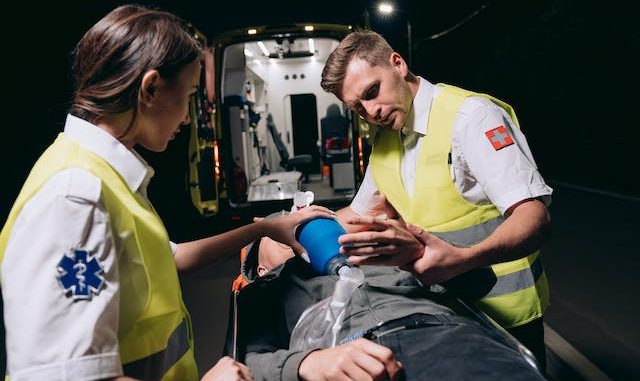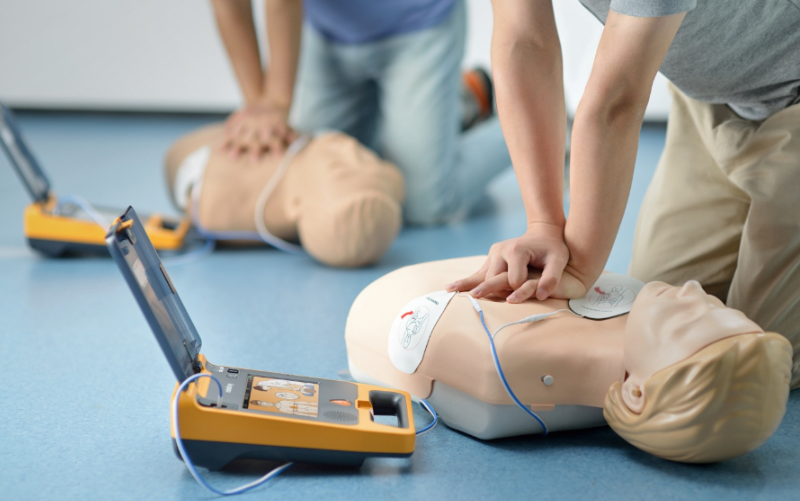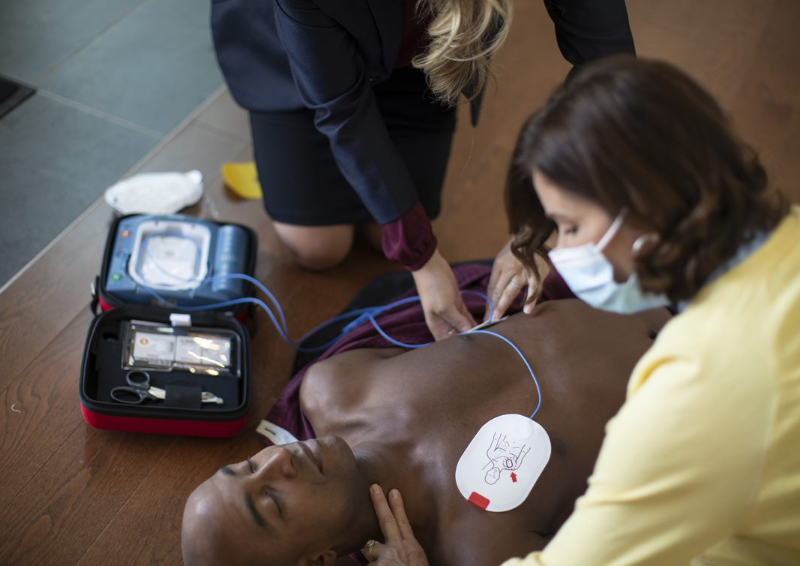
The human heart is by far the most important organ in the body. It is responsible for pumping oxygen-rich blood to all the cells and tissues, keeping us alive and functioning properly. However, sometimes things can go wrong, and a person may experience sudden cardiac arrest (SCA). SCA is a condition where the heart stops beating unexpectedly, cutting off blood flow to the brain and other vital organs.
It can happen to anyone, regardless of age or health status, and can often result in death if prompt action is not taken. In fact, millions of people around the world deal with this life-threatening emergency every year. If there’s not a trained medical professional nearby, the chances of survival decrease significantly and the outcome is often fatal. To help mitigate this issue and increase survival rates, the use of life-saving and easy-to-use automated external defibrillators (AEDs) has become more prevalent in recent years.
What Is the Use of an Automated External Defibrillator?
In short, an AED is a portable electronic device that can quickly analyse a person’s heart rhythm and deliver an electric shock to restore its normal beating. This process, known as defibrillation, is crucial in treating SCA and restoring blood flow to the vital organs. But what makes AEDs so beneficial in cardiac emergencies? How can they help save lives in these critical situations?
Increased Survival Rates in Sudden Cardiac Arrest Events
One of the primary benefits of AEDs is their ability to significantly increase the chances of survival in SCA cases. Studies have shown that when this device is used within the first few minutes of cardiac arrest, the survival rate can go up by 70%. This is because AEDs can quickly recognise and treat lethal heart rhythms, giving the person a better chance at surviving until medical professionals arrive.
Their inherent speed and effectiveness make them a crucial tool in the fight against sudden cardiac arrest. When they deliver a shock to a person in distress, it can help restore their heart rhythm and prevent further damage or death. These life-saving measures can be quite significant, especially in areas where access to medical care is limited or when time is of the essence.
Ease of Use and Accessibility for Non-medical Personnel
Another significant advantage of automated external defibrillators is their ease of use. These devices are designed to be user-friendly, with visual and audio prompts guiding the user through the steps. Even someone with no medical training can successfully operate an AED and potentially save a life.
This is because they’re specifically designed for the everyday person to use in emergency situations. They do not require advanced medical knowledge or training, making them accessible and useful for non-medical personnel such as bystanders, coworkers, and family members.
To use them, simply turn on the device, place the pads on the person’s chest as instructed, and follow the prompts. The device will analyse the heart rhythm and deliver a shock if needed, or prompt you to perform CPR until medical help arrives. When you consider that every minute without defibrillation can decrease survival rates by 10%, having an AED readily available in public spaces could make all the difference.
Portability and Availability in Public Spaces
These devices are also highly portable and can be easily carried to wherever they may be needed. This portability makes them ideal for use in public spaces such as airports, shopping malls, schools, and sports venues. In fact, an increasing number of countries have laws that require AEDs to be available in public spaces, further emphasising their importance.
Having these devices readily available in public spaces significantly increases the chances of survival in sudden cardiac arrest events. They can be quickly accessed and used by anyone nearby, saving precious time that could mean the difference between life and death. Even if one doesn’t have a known heart condition, cardiac emergencies can happen at any time and in any place. Having an appropriate response within minutes can be crucial in saving someone’s life, with AEDs playing a pivotal role in this.
Advanced Technology Ensures Safety
AEDs are equipped with advanced technology that ensures safety when using them. Some models have features such as paediatric pads and motion sensors that can adapt to the person’s size, age, and condition. They also have built-in safety protocols that prevent accidental shocks from occurring, making them safe for both the rescuer and the person in need.
Additionally, these devices perform regular self-checks to ensure they are functioning correctly and have enough battery power. This ensures that they are always ready for use in an emergency and can provide a fast response without any issues.
Empowers Everyday People to Act in Emergencies
Ultimately, these tools empower everyday people to act in emergencies, making them an essential tool in any public space. Knowing that an AED is readily available can give bystanders the confidence to intervene and potentially save a life. In emergency situations, every second counts, and having quick access to these devices can make all the difference.
Taking steps to educate the public on AEDs and their importance can further increase their usage and potentially save more lives. It’s crucial to promote a culture of emergency preparedness, where individuals are aware of these devices and feel confident in using them when needed.
